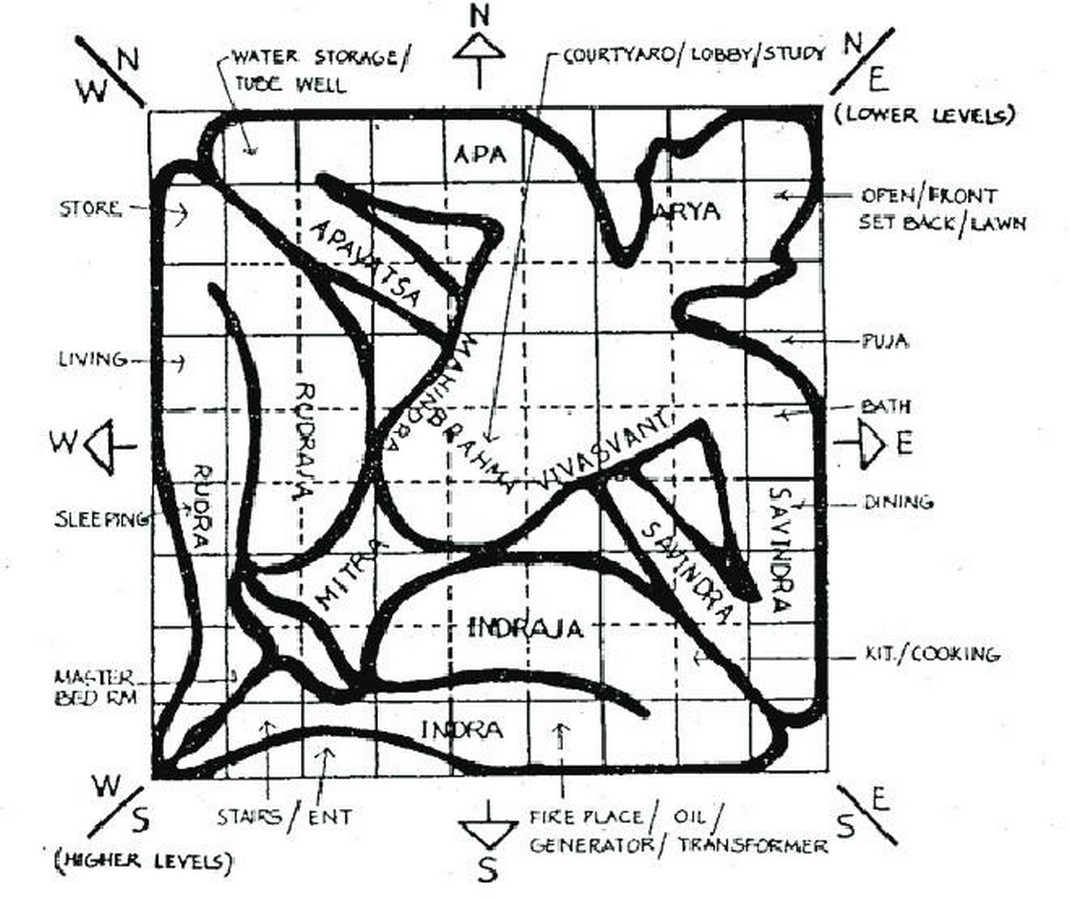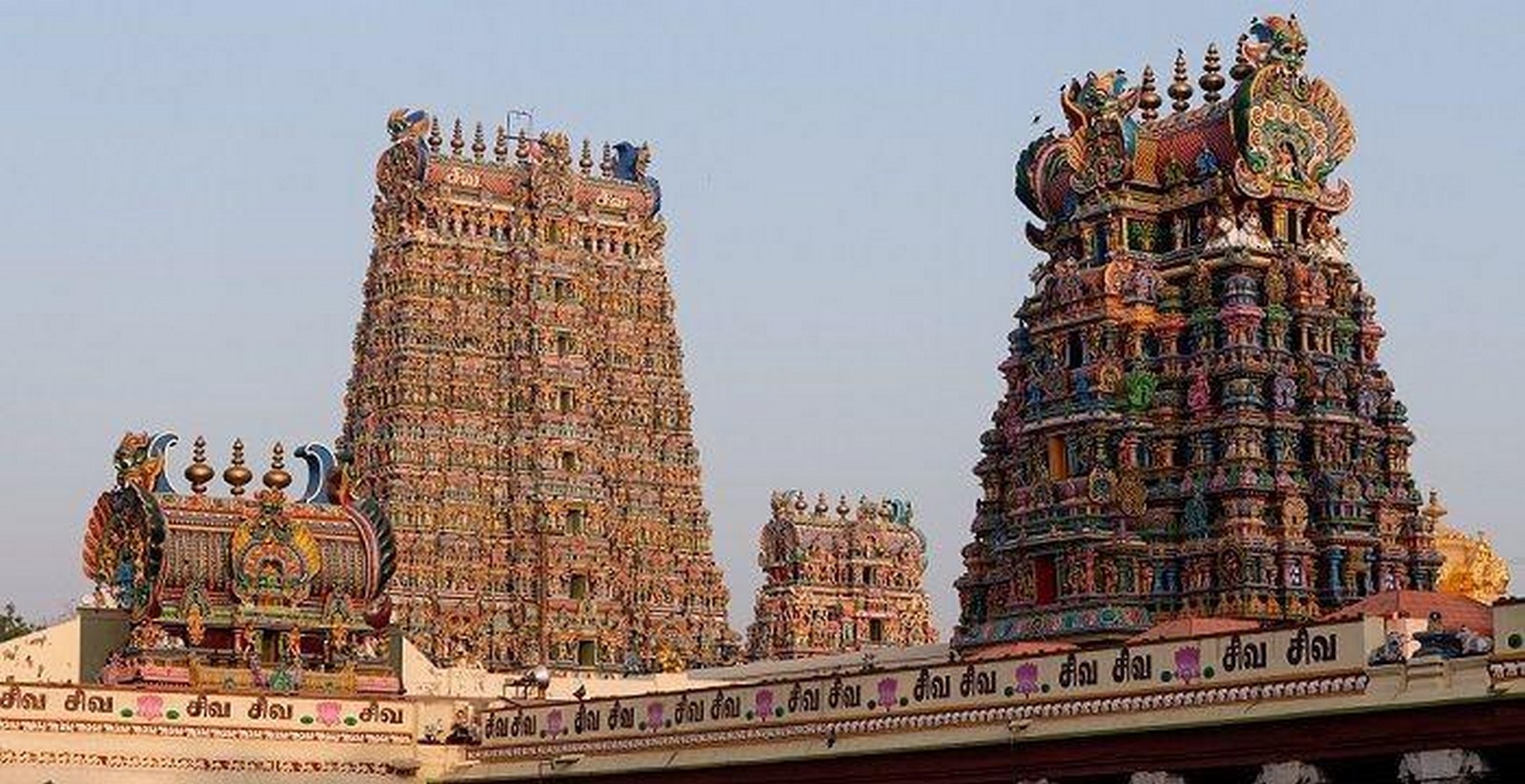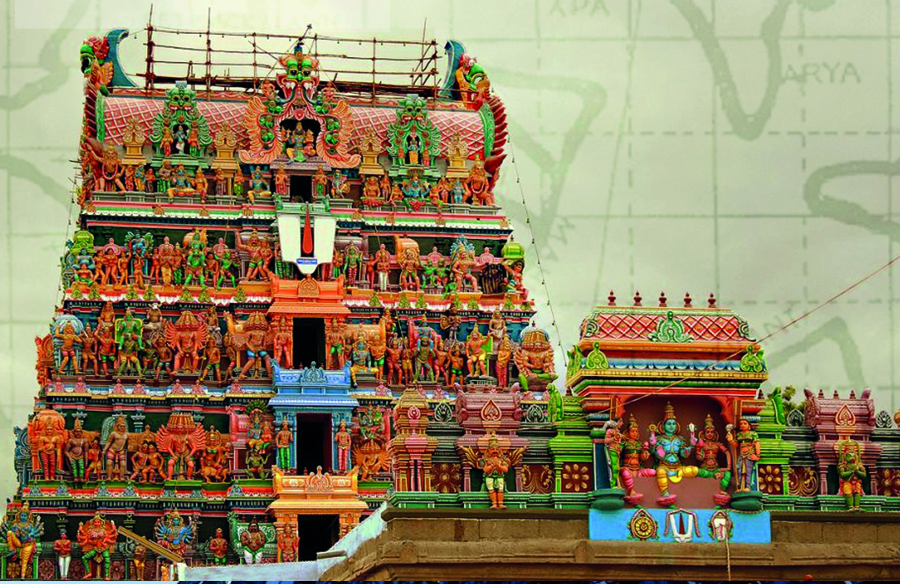Hindu architecture reflects a synthesis of elements from astronomy, sacred geometry, geology, and Hindu culture arts. The Vastu Shastra offers architects a form of expression whilst using mathematical principles of traditional Hindu architecture within the design and construction process.
The texts were formulated as a science covering all aspects of design, including site selection, location and orientation of the building, which has now evolved to improve the standard of living and psychological well-being of the humans inhabiting and experiencing these structures.

Architecture in the Indian subcontinent was dominated by temples and the importance of integrating culture within society. The sacrality of Hindu temple architecture is implemented within the urban context through the geographical relations and cultural ideologies of the temple, representing both the microcosm of our inner-spiritual space and the macrocosm of the universe.
Hindu temples are the place of contact between man and God, and are a prominent part of the cherished way of life, in India and neighbouring country Sri Lanka, encompassing key beliefs within Hinduism. Temple architecture utilises a variety of architectural forms and has carefully designed forms and spaces with elements designed to heighten the relationship between the being experiencing the architecture and the divine.
India is rich in professional treatises, such as shastras, with the ancient literature providing invaluable guidance and methods in the design and reconstruction of early settlements and building types. Key guidelines and principles, based on ancient religious texts such as the Vastu Shastra, are obeyed and followed to achieve the super-structured temples that are still standing today, symbolising the Hindu religion and culture.

Vastu Shastra is a philosophy of life in the Indian subcontinent, and one of the ancient architectural belief systems dealing with environmental criteria such as the Sun, magnetic poles and geopathic zones. The Shastra ensured the consistency of design in the conception of all Hindu temples and gave detailed rules and methods to all aspects of the architectural process. The Vastu Purusha Mandala, used as a formula for sacred building, is one of the main elements of the Hindu science of architecture and remains one of the most important branches of the Hindu literary tradition.
Since the first millennium, the Mandala has been elaborated in a series of patterns and proportions. The Mandala of 9 squares leads from the microcosm of the subtle body linking to the macrocosmic image of the entire universe and relates to the key principles of the Vastu Shastra.
The dual study of man and the heavens is represented in a diagram structure known as the Vastu Purusha Mandala. Vedic, mathematical and geometric formulae were used to create such a diagram that binds the Purusha (cosmic being) to a specific place for worship. The various diagrams of the Vastu Purusha Mandala are a key part of town and city planning and also governs the organisation of facilities in India.
Variants such as climate, topography, cultural specifications and building materials affect the layout and implementation of Vastu, ultimately creating a structure at one with the universe as well as the surrounding environment.

Once the orientation of the building on the site is established, the Vastu Purusha Mandala is imposed on the area. Each square of the Mandala has a designated purpose and deity, used for spiritual rites as well as building and construction. It is regarded as the master grid for design and symbolises a cosmic man, with various subdivisions indicating the house’s form and arrangement or area.
The Vastu Purusha Mandala is a pattern of squares where the central elements form an open space, a courtyard for example, around which the rooms are built opening inwards that are naturally ventilated by the continuous airflow. Some buildings are made up of concentric zones around a courtyard depending on the climate and type of architecture, with the central courtyard space working as a ‘lung’ for the edifice. Verandas that typically surround courtyards, complying with the Vastu Purusha Mandala, generate air circulation and reduced humidity within the architecture in hot countries.
Cities and villages had different types of plans in India, as a theoretical idea according to the texts on the science of architecture, Vastu Shastra. These texts allocate specific deities to particular parts of the Vastu Purusha Mandala grid, which helps to specify exact locations for temples. Religious buildings became the focus and sacred site of a settlement.
The sanctum where the main deity of the temple resides is a key feature, with the sanctum’s doorway usually on the east side so the sun’s rays can flow in and encompass the deity. The subsidiary shrines of other Gods and Goddesses were placed as a complex and had significant symbolism for a particular pattern of worship.
Most temple designs implied and were based on a hierarchy and a sense of emanation, with the hierarchies reflecting patterns in sacred texts and related ideas to cosmic principles. Hindu traditions have a vertical momentum, creating superstructures with the mastery of masonry, handling a variety of hard and soft stones to create the ambitious yet magnificent Hindu temple structures still standing today. Representation of culture and ancient traditions was always the main concern for temple architects rather than the structural innovation element.

Ideologies of Vastu Shastra are directly reflected in rituals, astrological matters and ideas of temple design. The Shastra was not illustrated but temple designs were drawn using the understanding of the architectural knowledge outlined and described. The Shastra consisted of rules for consecrating and laying out a sacred site, ready for construction, which was later transmitted by the treatises as governing temple architecture and was also applied to village, camp and fort designs. The texts were framed in terms of how to design, draw and construct these complex temple structures seen throughout India today.
The Vastu Purusha Mandala, a fundamental attribute and feature of the Vastu Shastra, is used in relation to the site as a gridded plan, in order to position certain elements and points of a building accurately and for the most environmental, psychological and spiritual benefits.
The Shastras were extensively used when designing domestic and administrative architecture, which ensured effective and functional buildings with a positive relationship with the environment. These texts were passed down generations by Brahmins, to be used within architectural practice and provide a framework for creating new and prominent designs, to represent and withhold the Hindu culture into the future.











